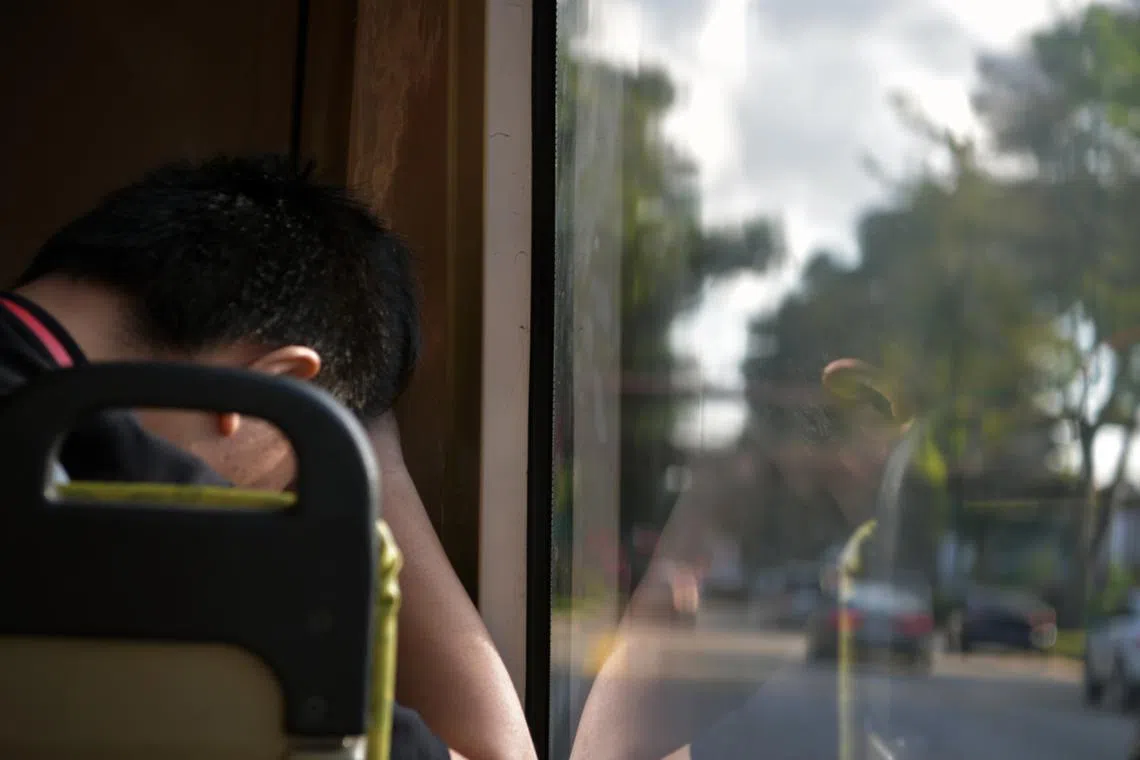Number of reported online bullying cases expected to rise as awareness grows: Chan Chun Sing
Sign up now: Get ST's newsletters delivered to your inbox

The average number of bullying incidents has remained steady, at an annual average of six incidents in secondary school, for every 1,000 students.
PHOTO: ST FILE
Follow topic:
SINGAPORE – The number of reported instances of online bullying is expected to “progressively rise”, said Education Minister Chan Chun Sing, as children have wider exposure to influences especially on the internet, and more people become aware of what cyber bullying looks like.
There are fewer reported cases of online bullying than offline cases, but this could be because people are “less sensitive to what constitutes online bullying”, he said in Parliament on Oct 14.
Mr Chan was responding to Ms He Ting Ru (Sengkang GRC), who asked for the breakdown between online and offline bullying incidents reported to schools.
The average number of bullying incidents has remained steady, he said.
For every 1,000 students, there is an annual average of two incidents of bullying in primary schools, and six incidents in secondary school. These incidents cover all forms of bullying, both in and outside school.
Of these, the use of technology is involved in fewer than one incident per 1,000 secondary students and even fewer than that in primary schools.
Eight MPs, including Ms Hany Soh (Marsiling-Yew Tee GRC) and Mr Gerald Giam (Aljunied GRC), asked about the recent spate of bullying videos circulated online and in chat groups, and how the Ministry of Education (MOE) is tackling such incidents.
Mr Louis Chua (Sengkang GRC) also asked whether the number of reported cases truly reflects parents’ concerns, and MOE’s approach to detecting and addressing bullying over the years.
Videos in September showed a boy punching a smaller Qihua Primary School boy a group of Bukit View Secondary School boys
Students today are more exposed to “much more diverse influences” largely through the internet, making the issue of bullying more complex, said Mr Chan.
On the positive side, MOE has stepped up efforts to sensitise students to what constitutes bullying, which has led to better detection of it and increased willingness among students to report such incidents.
“Students are today much more confident and willing and able to come forward (to) tell us what they have experienced,” said Mr Chan.
At the same time, students may have different perceptions of what constitutes bullying, he said.
“Regardless of the complexity, we encourage all students to report instances (when) they feel that they have not been treated with respect or they feel unsafe, to let the school leaders know,” he added.
“And we will work with parents and the community to try and... rehabilitate the perpetrators and also to take care of the physical and emotional needs of our children.”
Mr Chan said that when a report is made, schools conduct thorough investigations before deciding on appropriate actions, depending on the severity of the incident.
For minor cases arising from misunderstandings, teachers help students resolve their differences, while serious, intentional bullying leads to disciplinary actions alongside restorative measures.
In instances of cyber bullying, students can report cases to online service providers. For severe bullying or fights, schools will work with parents and the authorities to ensure student safety, while meting out disciplinary measures, including detention, suspension or, as a last resort for boys, caning.
For severe bullying and fights, a police report will be made.
There is no “one size fits all” solution, said Mr Chan. “It requires a nuanced approach that carefully considers the well-being and reform of both victims and perpetrators.”
This includes supporting them and fostering an environment where change is possible, he said.
“We want to steer clear of actions that might hinder or deny a perpetrator’s chance for rehabilitation, such as counterproductive social media behaviours,” Mr Chan said.
Doxxing perpetrators – or exposing their identity and personal details – is one such method that may “backfire and complicate” efforts to help the victim and rehabilitate the perpetrator, he said, in response to concerns raised by Ms Yeo Wan Ling (Pasir Ris-Punggol GRC) about students’ details being leaked on social media platforms or group chats.
“Doxxing itself, in certain contexts, will constitute bullying itself as well,” he said, adding that MOE will explore ways to manage this with the platform companies.
Mr Chan said that students and the public should not record or share bullying incidents online, to prevent further hurt to those involved.
Sharing viral content of bullying incidents, with the intention to dox or isolate the bullies, may “drive them to extremes”, which makes it “harder for them to mend their ways”, he said.
“As a society, we must be careful not to normalise such behaviours unintentionally,” Mr Chan said, adding that it takes a collective effort to “discourage copycats and attempts to out-viral the last bullying video”.
Trying to dox perpetrators will leave a digital footprint for them and goes against rehabilitation efforts, said Mr Chan.
“This is not to make an excuse for the people who have done wrong,” he said. “We try to rehabilitate them, just as we punish them for doing wrong.”
The ministry is focused on educative and restorative efforts, to help students learn from their mistakes, said Mr Chan, instead of just expelling or suspending bullies from school.
“Whenever a student is affected by bullying, whether as a victim or perpetrator, the teachers and school counsellors provide emotional support to help the students cope and mend relationships,” he said, with referrals to community resources for those needing specialised support.
Parents play an important role in rehabilitation efforts and should partner the ministry to protect children, said Mr Chan.
Rehabilitation efforts must factor in the circumstances and backgrounds of both the victim and the perpetrator, said Mr Chan, responding to Mr Giam’s follow-up questions about the ministry’s policies for bullying and intervention.
“It’s important for us not to oversimplify these issues and very often, the rehabilitation for both the victims and the perpetrators is not a short journey,” Mr Chan said. “We need to put in the necessary efforts with the parents and the community partners in order to do this well.”


